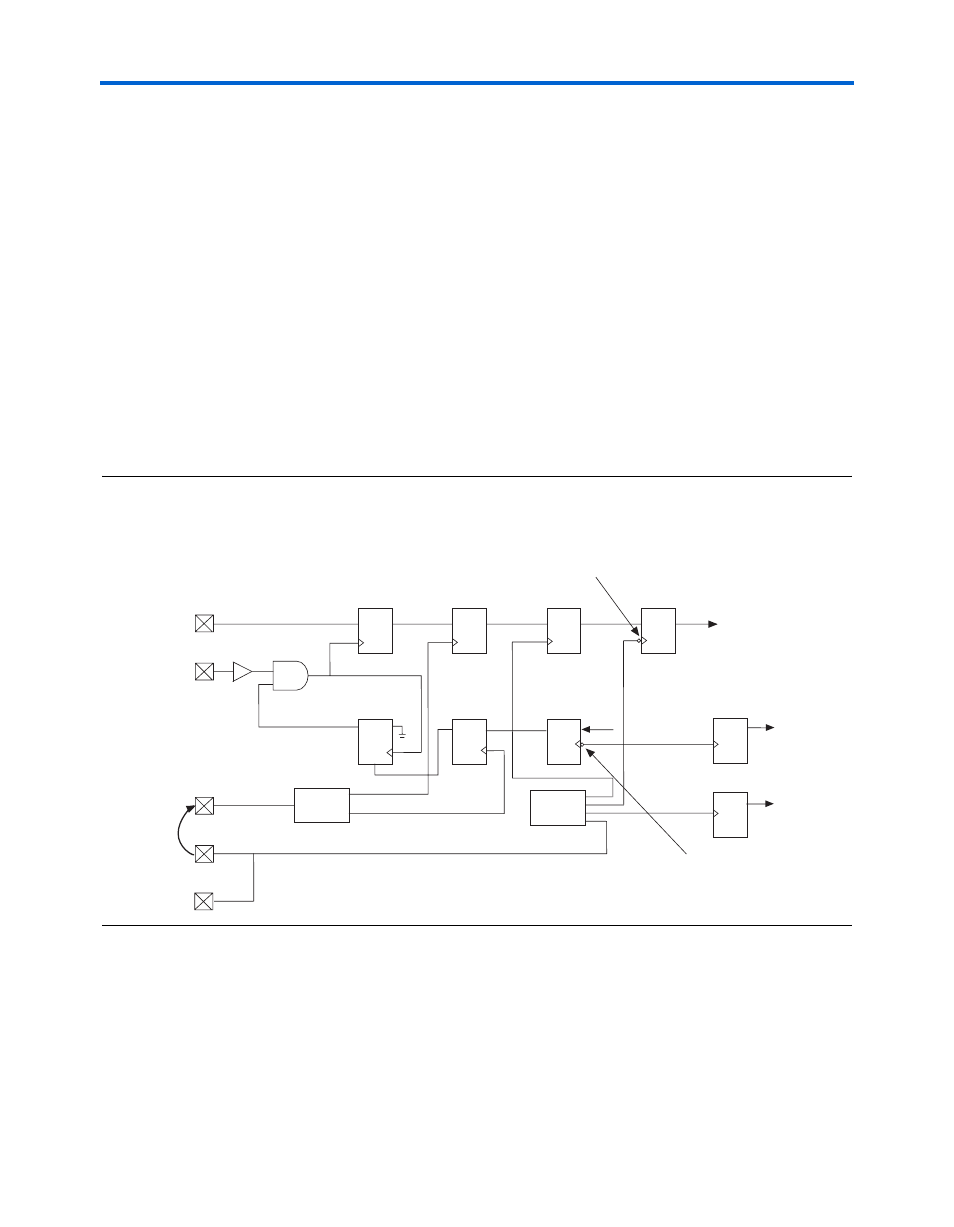S, you can either use the – Altera DDR Timing Wizard User Manual
Page 78

3–18
Altera Corporation
DDR Timing Wizard User Guide
November 2007
Timing Closure Process
and hold time requirements of the user logic clocked by the system clock.
The ideal phase shift may change by a few degrees, due to
place-and-route changes due to the register insertion.
The intermediate postamble registers, on the other hand, affects the
postamble clock cycle and phase shift selections. When the Intermediate
postamble registers
option is unchecked, the clock going to the system
postamble registers is the system clock inverted by 180°. When that
option is checked, the clock going to the system postamble registers is the
0° system clock. Therefore, the state of this option affects the clock phase
shift of the dq_enable_reset registers.
Figures 3–9
shows the relationships of the resynchronization registers
and postamble registers with their respective intermediate registers for
fedback-PLL mode interfaces in Stratix II devices. The name of the
registers shown are from the DDR2 SDRAM Controller Compiler names.
Figure 3–9. Resynchronization, Postamble, and Intermediate Registers Connections for Fedback-PLL mode
in Stratix II Devices
Re-run DTW After First Compile When Using Classic Timing
Analyzer
For any memory interfaces using Classic Timing Analyzer, you need to
extract the design t
CO
to the DTW after the first compile and then run the
dtw_timing_analysis.tcl
script. To extract t
CO
s, you can either use the
D Q
Fedback
PLL
D Q
D Q
D Q
D Q
D Q
System
PLL
Q D
Q D
Q D
dq_capture
resynched_data
fedback_
resynched_data
inter_rdata
User logic
dq_enable_reset
doing_rd_delayed
dq
dqs
DQ
DQS,
CK/CK#, Address,
Command,
Fedback out
User logic
Optional, depending on setting
of "Insert intermediate
resynchronization registers"
Optional, depending on setting
of "Insert intermediate
postamble registers"
Fedback
clock in
Optional
Fedback
clock out
Optional CK/CK#
clk1
clk0
clk2
clk0
clk3
clk1
First
Resynchronization
Registers
Second
Resynchronization
Registers
Intermediate
Resynchronization
Registers
Postamble
System Postamble